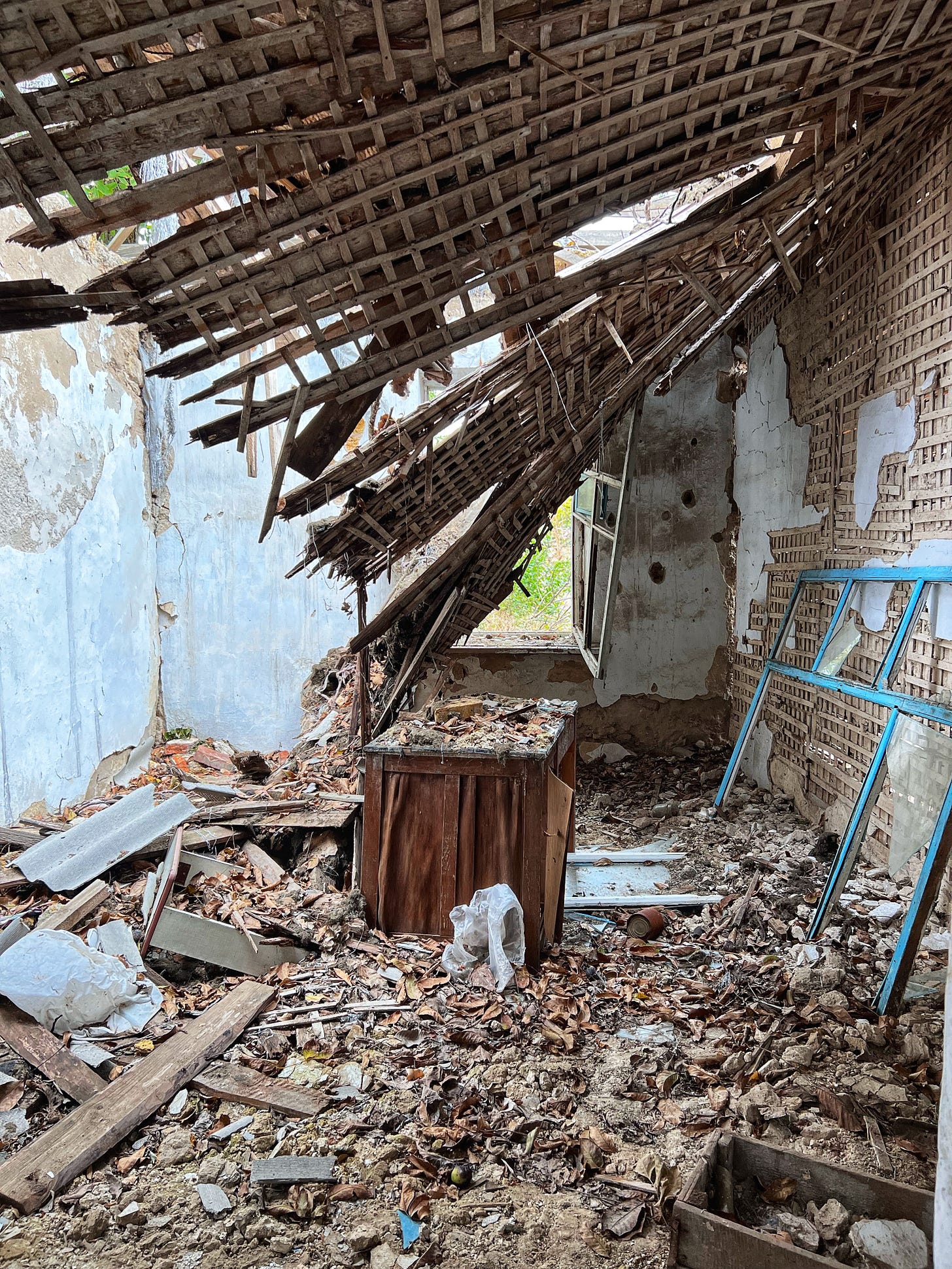Where there’s life, there’s hope
A year after Kherson’s liberation - I went with volunteers to one of the villages in nearby Mykolaiv region which was left totally destroyed by Russian attacks. But life is slowly returning.
The village of Zorya in Mykolaiv region was once home to around 300 people. It was a pleasant little place, with a village primary school and a small theatre which was used as a cultural centre, for plays and musical concerts. Until the Russians came - and even though they didn’t occupy the village, it was right in the midst of intense Russian air and artillery attacks, destroying the school, ripping holes through the cultural centre, trashing homes and ruining plots of land. Behind the school, a little playground lay abandoned and silent; there were even shrapnel holes in the children’s slide.
The village school
It is exactly a year since Kherson was liberated, since those heady, joyous scenes as people ran onto the streets to embrace Ukrainian soldiers and wave their carefully hidden Ukrainian flags. Kherson is now free - although the Russians across the river still subject the city to a constant, deadly barrage of shelling. If you want to know what it’s like to be there - read Zarina Zubinsky and Paul Conroy’s account
- the attacks are utterly relentless and it is hard to imagine how anyone lives there and manages to go about their day.But a few miles away in Mykolaiv region - assistance is on the way for those villages seemingly frozen in time. The Danish government has helped to fund temporary repairs - like tarpaulins to cover damaged roofs, plywood for broken windows, and new water treatment plants along with miles of pipes and stand pumps, to provide accessible clean drinking water, working with a zero-waste process called reverse osmosis.
Watching an aid lorry being unloaded
And volunteers have been coming on a regular basis too. Like the Sunflower Project, which has been helping to collect and deliver supplies to Zorya, as well as a number of other towns and villages in Kherson and Mykolaiv regions - including Blahodatne which the Russians occupied for eight months before levelling the place to the ground. Their volunteers fill up their vans from whatever they’ve managed to collect in their own warehouses - and bring in all sorts of essentials from hygiene products and animal food to generators and fuel.
I traveled with Kevin, Oro and Steven from the Sunflower Project team into Zorya, bringing two van loads of supplies from Mykolaiv. We pulled up behind a large lorry full of bottled drinking water, which was being unloaded by a group of cheerful young people from a local charity: a couple of elderly men were sitting on some crates nearby, having a cigarette and watching the action. A village hall had been turned into a small warehouse with neatly stacked shelves of winter clothes, children’s toys, tinned food and bottled water: an efficient looking lady was in charge, filling out paperwork and making sure everything was unloaded in the right place.
The Sunflower guys showed me around: we walked through the silent playground, looked into the destroyed school where toys lay in between bits of debris on the floor, and the little concert hall, where once people had watched dancing and listened to music and clapped and sang along. It was heartbreaking: what senseless destruction.
But this is Ukraine and no one is giving up - they are working to rebuild their future, despite the war. There were workmen digging trenches by the side of the road to lay some kind of pipes: there were cows back in fields which are clear of mines, there were the young people with their lorry of water and Ukrainian flags flying outside peoples homes: all proof that life, and hope is returning to Zorya at last.










Oro is such a good guy. I always enjoy chatting with him. Great story!!!
Russians are the close descendants of the barbarian horde with no place in civilised society. Seeing Zorya coming back warms my heart.